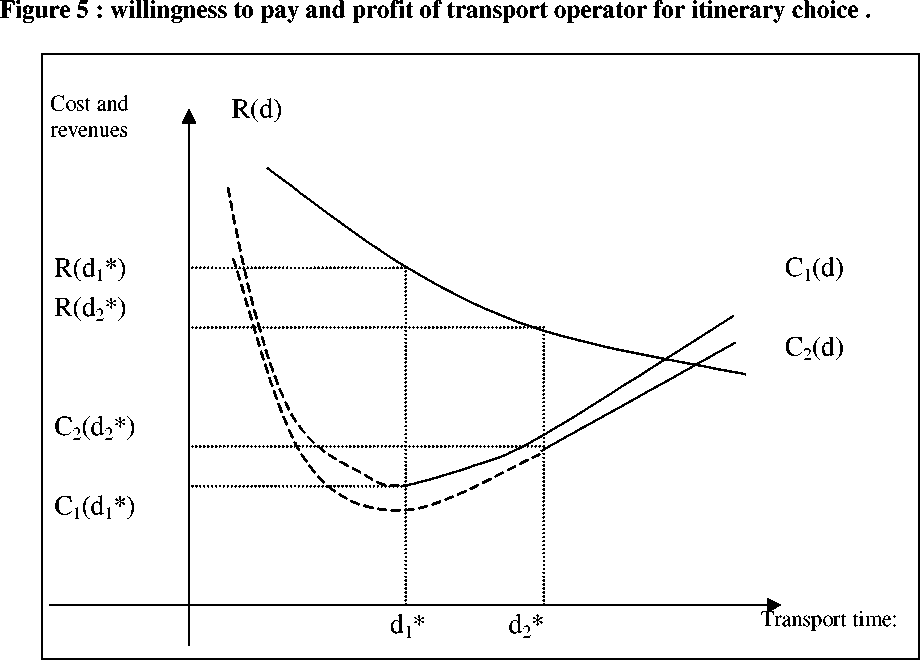European Regional Science Association ___________________________________________________ August, 2003
willingness to pay for time savings relates to trade-off between costs and revenues for a
fixed infrastructure endowment or equivalently for fixed time depending revenue.
Typically in itinerary choice, hauliers choose duration to maximise the transportation
time depending profit Pi(d) = R(di) - Ci(di), where revenues R(d) depend on transport
duration and Ci that are available defined on each possible itinerary. This is illustrated
on the graph hereafter which represents two cost functions for two distinct itineraries.
These costs functions are truncated to represent the fact that maximum available speed
on each itinerary is constrained. So the dashed part of each cost function is not available
to hauliers. The graph also represents a transport time depending hauliers revenue.
There could be a discussion here on the aspect of this revenue curve. This curve could
be non differentiable, it could exhibit threshold, it could also be very close to the cost
curve reflecting the fact that profit in transport industry are usually low. For
simplification purpose we suppose a continuous R curve as represented below.

In this context, the Willingness to Pay that is expressed by hauliers in SP or RP
itinerary choice, corresponds to the difference of profit (R(d1*) - C1(d1*)) - (R(d2*) -
C2(d2*)) between two itineraries for a fixed R function or equivalently for a fixed
market freight rate. Note that this extra profit incorporates all the cost and revenue
14
More intriguing information
1. Globalization, Divergence and Stagnation2. The name is absent
3. Electricity output in Spain: Economic analysis of the activity after liberalization
4. Discourse Patterns in First Language Use at Hcme and Second Language Learning at School: an Ethnographic Approach
5. On s-additive robust representation of convex risk measures for unbounded financial positions in the presence of uncertainty about the market model
6. The name is absent
7. A Multimodal Framework for Computer Mediated Learning: The Reshaping of Curriculum Knowledge and Learning
8. ROBUST CLASSIFICATION WITH CONTEXT-SENSITIVE FEATURES
9. The name is absent
10. Altruism with Social Roots: An Emerging Literature